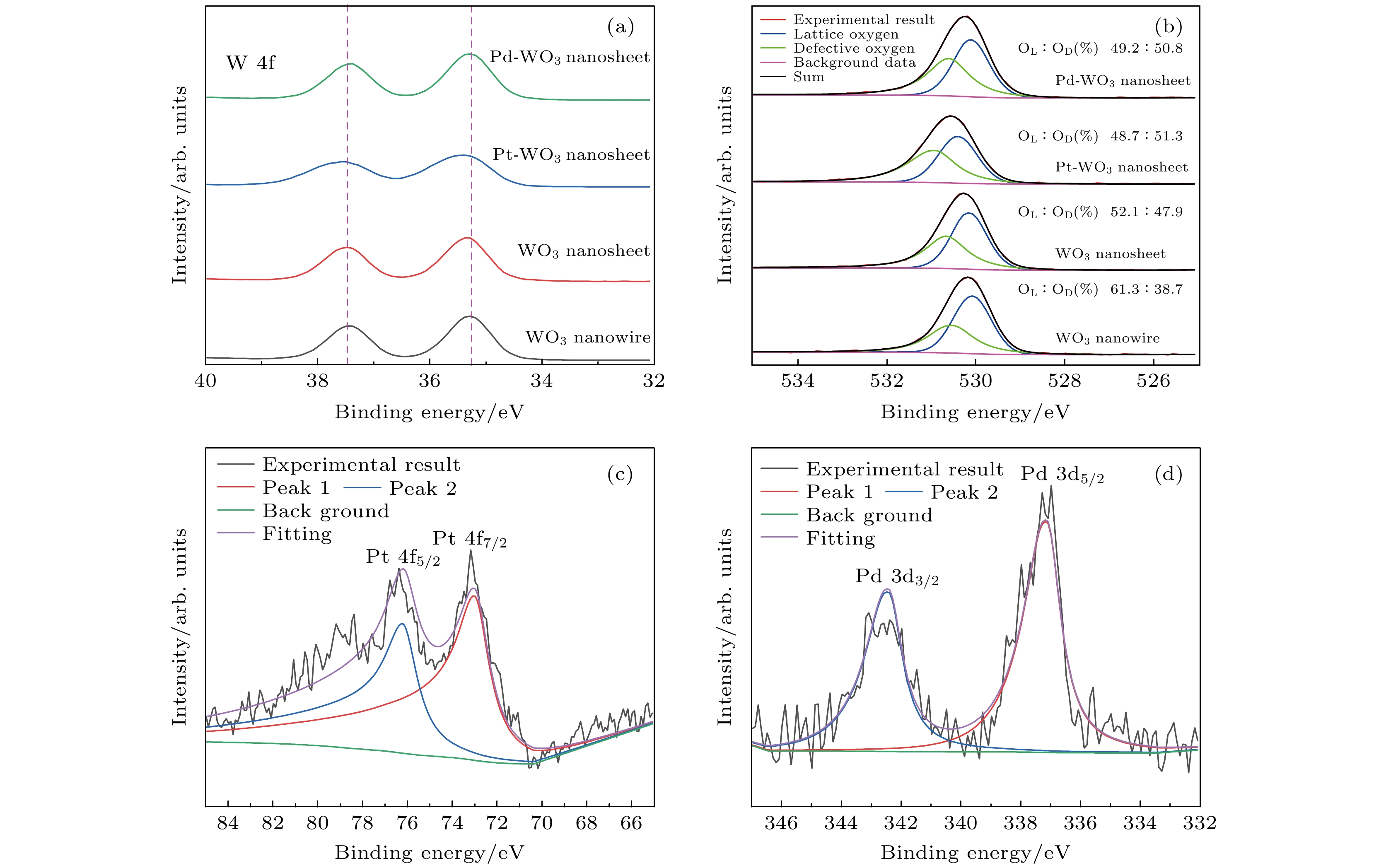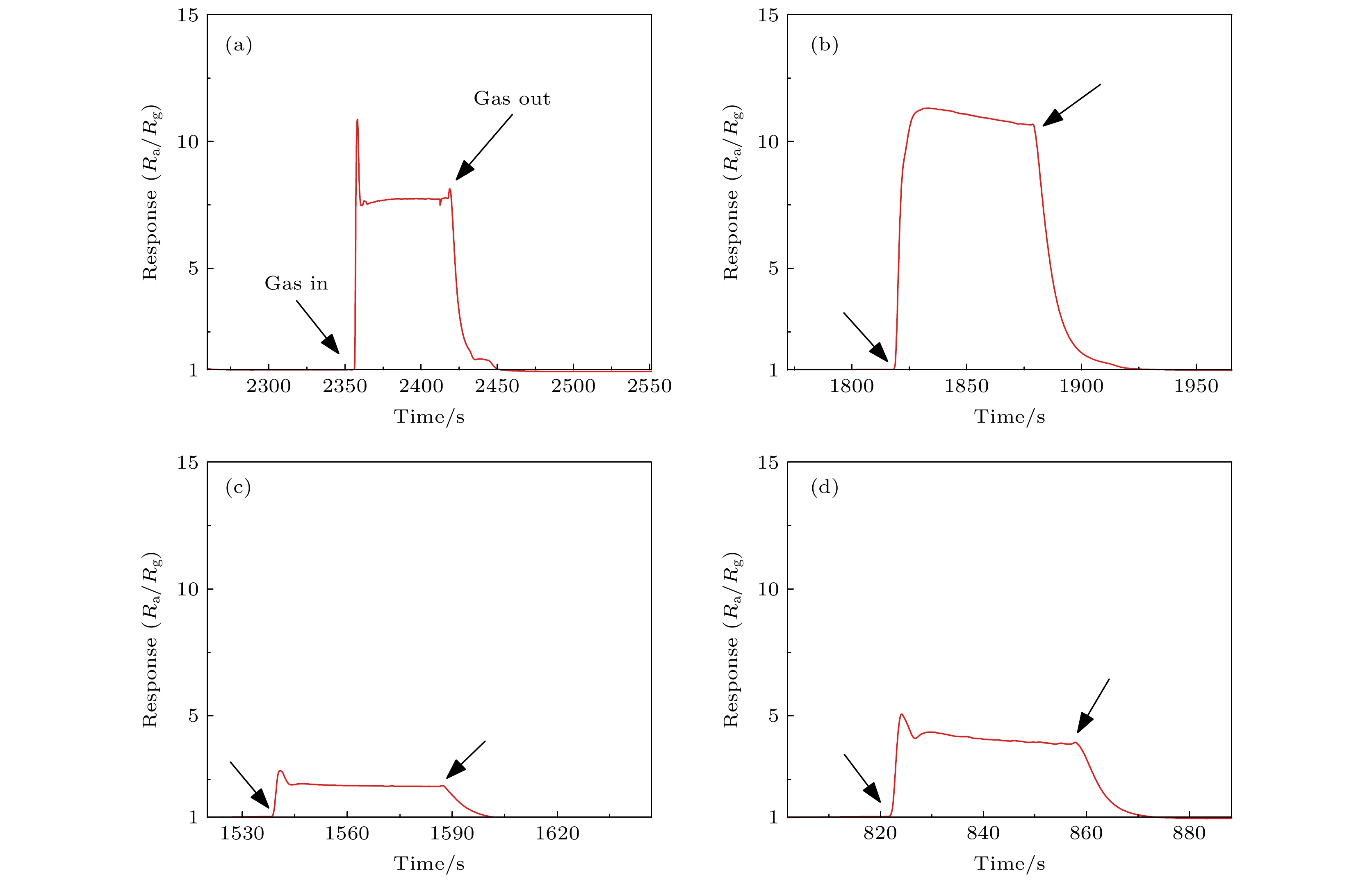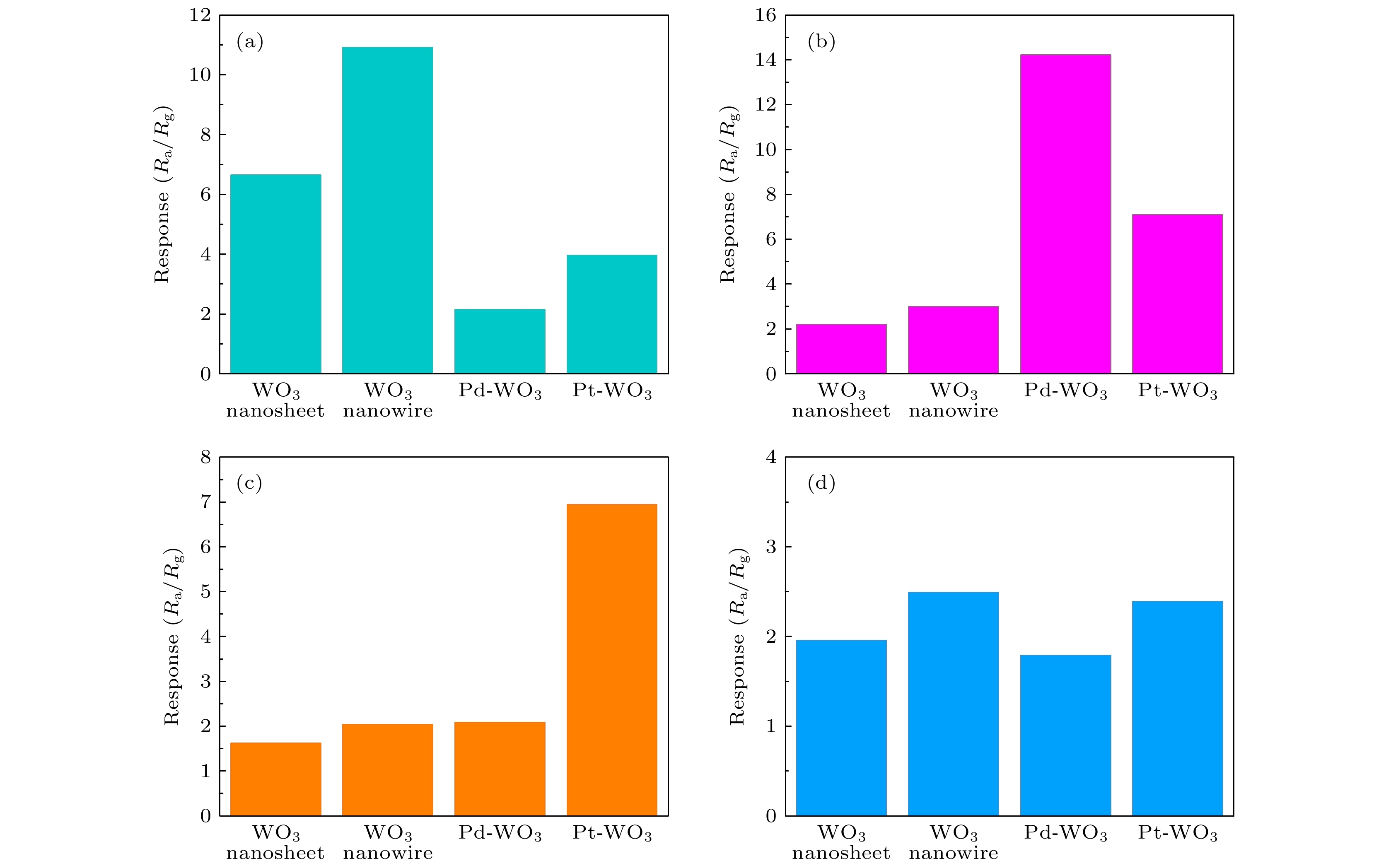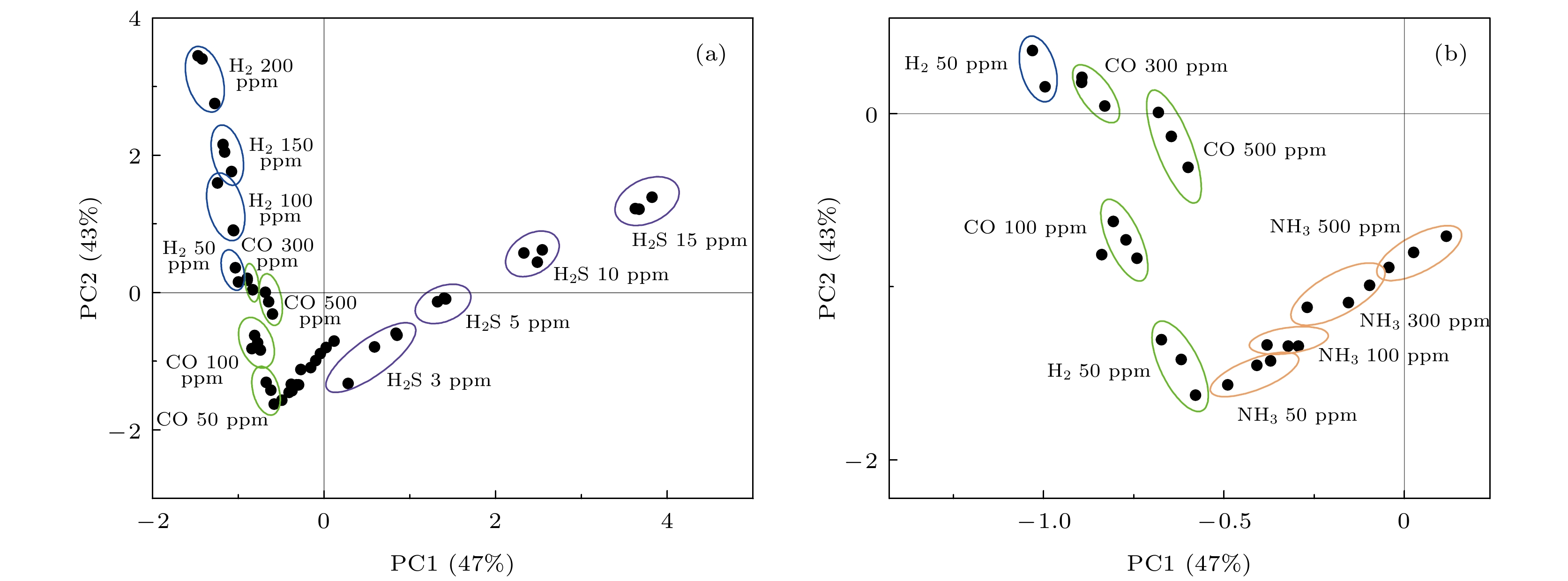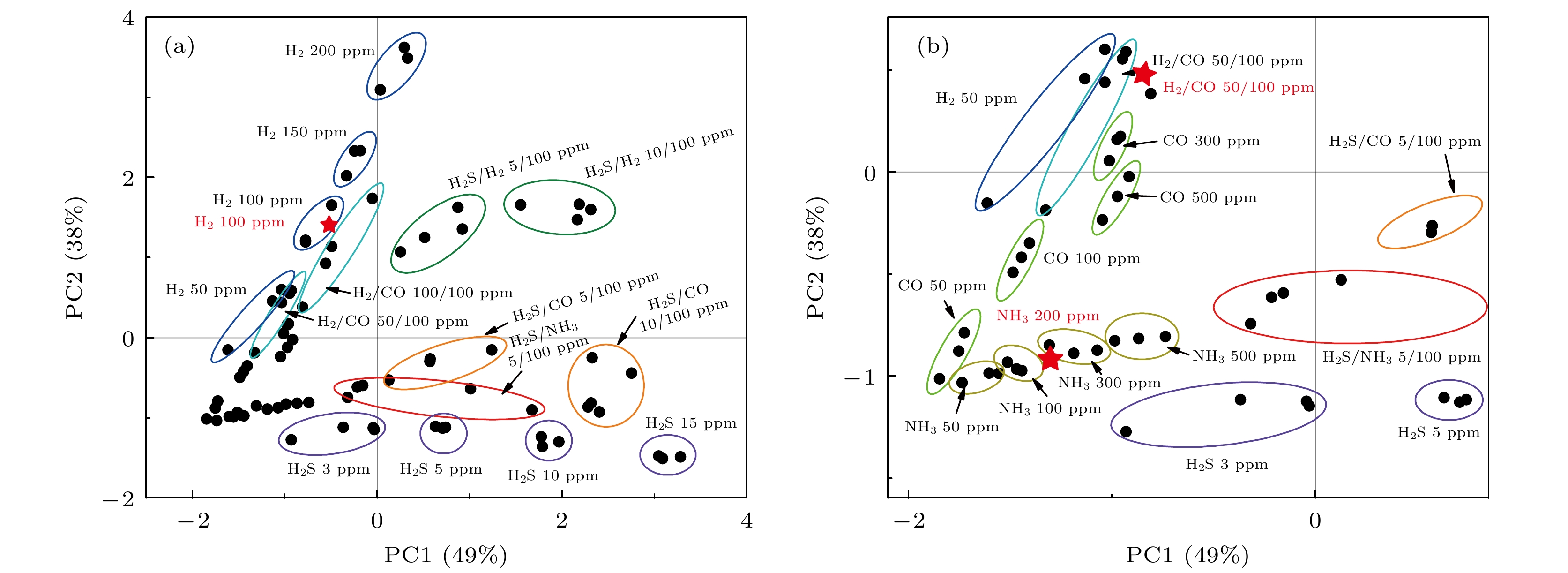-
In recent years, quite a few production safety accidents caused by hazardous gas leakage have occurred in the petrochemical industry, causing great potential safety hazards and huge economic losses. Therefore, it is necessary to develop gas sensors with high sensitivity and accurate identification. Semiconductor gas sensor, which has the advantages of high sensitivity, fast response and high integration, is one of the most popular types in the sensing field. However, the semiconductor gas sensor has low specific recognition to reducing gases (such as H2S, CO, H2, etc.), and it is difficult to accurately achieve mixed-gas identification with a single sensor. With the development of micro-electromechanical systems (MEMS), the size of semiconductor sensor can be reduced to millimeters with high integration. In order to solve the cross-sensitivity problem, the concept of sensor array has been proposed and widely studied. Through the principal component analysis, the data having the most characteristic information can be selected from among the acquired data while preserving the original data information as much as possible, and they are projected onto the new orthogonal vector by linear transformation. This method can maximize data dispersion and minimize information loss after dimensionality reduction. Therefore, it is an effective way to identify the gas species by combining sensor array. In this work, we synthesize four types of tungsten trioxide sensing materials with different morphologies or compositions by the hydrothermal method. The sensor array is fabricated by MEMS-based nano sensors. The gas sensitivities to the four single gases (H2S, CO, H2, NH3) and their mixed gas are measured by sensor array, which can acquire four groups of data at the same time. Compared with single sensor, the sensor array has different responses to pure gas and mixed gas, which is the basis for gas identification. Furthermore, we use principal component analysis method to process the response of sensor array. The results show that different gases will occupy different areas in the diagram for pure gas, and show certain directionality according to different concentration distributions. By determining the position of the detected gas, the composition and concentration of the measured gas can be inferred. For mixed gas, the distributions of single gases show the same tendency. And the points of mixed gas always occupy the area between the fans formed by the two gas components, and each region keeps independent. Therefore, this method can also identify the compositions and the concentrations of gas species contained in mixed gas. These results prove that nano sensor array can provide direction and guidance for semiconductor sensor to identify the gas species and concentration. -
Keywords:
- gas sensor /
- sensor array /
- principal component analysis
[1] Wang F, Hu K, Liu H, Zhao Q, Wang K, Zhang Y 2020 Int. J. Hydrogen Energy 45 7234
 Google Scholar
Google Scholar
[2] Zhu Z, Xing X, Feng D, Li Z, Tian Y, Yang D 2021 Nanoscale 13 12669
 Google Scholar
Google Scholar
[3] Zhou Q, Sussman A, Chang J, Dong J, Zettl A, Mickelson W 2015 Sens. Actuators A 223 67
 Google Scholar
Google Scholar
[4] Mickelson W, Sussman A, Zettl A 2012 Appl. Phys. Lett. 100 173110
 Google Scholar
Google Scholar
[5] Wang J, Yang J, Chen D, Jin L, Li Y, Zhang Y, Xu L, Guo Y, Lin F, Wu F 2018 IEEE Sens. J. 18 6765
 Google Scholar
Google Scholar
[6] Chen D, Hou X, Li T, Yin L, Fan B, Wang H, Li X, Xu H, Lu H, Zhang R, Sun J 2011 Sens. Actuators B 153 373
 Google Scholar
Google Scholar
[7] Luo X, Lou Z, Wang L, Zheng X, Zhang T 2014 New J. Chem. 38 84
 Google Scholar
Google Scholar
[8] Su Y, Chen P, Wang P, Ge J, Hu S, Zhao Y, Xie G, Liang W, Song P 2019 RSC Adv. 9 5987
 Google Scholar
Google Scholar
[9] Shi J, Cheng Z, Gao L, Zhang Y, Xu J, Zhao H 2016 Sens. Actuators B 230 736
 Google Scholar
Google Scholar
[10] Shobin L R, Manivannan S 2018 Sens. Actuators B 256 7
 Google Scholar
Google Scholar
[11] Chen H, Zhao Y, Shi L, Li G D, Sun L, Zou X 2018 ACS Appl. Mater. Interfaces 10 29795
 Google Scholar
Google Scholar
[12] Zhu L Y, Yuan K P, Yang J H, Hang C Z, Ma H P, Ji X M, Devi A, Lu H L, Zhang D W 2020 Microsyst. Nanoeng. 6 30
 Google Scholar
Google Scholar
[13] Li W, Liu H, Xie D, He Z, Pi X 2017 Sci. Rep. 7 1969
 Google Scholar
Google Scholar
[14] Gabrieli G, Hu R, Matsumoto K, Temiz Y, Bissig S, Cox A, Heller R, Lopez A, Barroso J, Kaneda K, Orii Y, Ruch P W 2021 Anal. Chem. 93 16853
 Google Scholar
Google Scholar
[15] Rullich C C, Kiefer J 2019 Analyst 144 2080
 Google Scholar
Google Scholar
[16] Jolliffe I T, Cadima J 2016 Philos Trans. A Math. Phys. Eng. Sci. 374 20150202
 Google Scholar
Google Scholar
[17] Li Z H, Xie J, Hu X B, Chen C, Xie L L, Zhu Z G, Zheng L Y 2018 Mater. Sci. Forum 939 133
 Google Scholar
Google Scholar
[18] Bai S, Chen S, Zhao Y, Guo T, Luo R, Li D, Chen A 2014 J. Mater. Chem. A 2 16697
 Google Scholar
Google Scholar
[19] Wang Q, Wu H, Wang Y, Li J, Yang Y, Cheng X, Luo Y, An B, Pan X, Xie E 2021 J Hazard. Mater. 412 125175
 Google Scholar
Google Scholar
[20] Zhou Q, Xu L, Umar A, Chen W, Kumar R 2018 Sens. Actuators B 256 656
 Google Scholar
Google Scholar
[21] Wang L, Wang Y, Yu K, Wang S, Zhang Y, Wei C 2016 Sens. Actuators B 232 91
 Google Scholar
Google Scholar
[22] Brun M, Berthet A, Bertolini J C 1999 J Electron. Spectros. Relat. Phenomena. 104 55
 Google Scholar
Google Scholar
[23] Schipani F, Miller D R, Ponce M A, Aldao C M, Akbar S A, Morris P A, Xu J C 2017 Sens. Actuators B 241 99
 Google Scholar
Google Scholar
[24] Hua Z, Yuasa M, Kida T, Yamazoe N, Shimanoe K 2014 Chem. Lett. 43 1435
 Google Scholar
Google Scholar
[25] Rong Q, Xiao B, Zeng J, Yu R, Zi B, Zhang G, Zhu Z, Zhang J, Wu J, Liu Q 2022 ACS Sens. 7 199
 Google Scholar
Google Scholar
[26] Wang C, Zhang Y, Sun X, Sun Y, Liu F, Yan X, Wang C, Sun P, Lu G 2020 Sens. Actuators B 321 128629
 Google Scholar
Google Scholar
[27] Kim M H, Jang B, Kim W, Lee W 2019 Sens. Actuators B 283 890
 Google Scholar
Google Scholar
[28] 胡云鹏, 陈焕新, 周诚, 杨小双, 徐荣吉 2012 化工学报 63 85
 Google Scholar
Google Scholar
Hu Y P, Chen H X, Zhou C Yang X S, Xu R J 2012 CIESC J. 63 85
 Google Scholar
Google Scholar
[29] Lu Y, Partridge C, Meyyappan M, Li J 2006 J. Electroanal. Chem. 593 105
 Google Scholar
Google Scholar
[30] 谢前朋, 潘小义, 陈吉源, 肖顺平 2021 物理学报 70 044302
 Google Scholar
Google Scholar
Xie Q P, Pan X Y, Chen J Y, Xiao S P 2021 Acta Phys. Sin. 70 044302
 Google Scholar
Google Scholar
[31] Zeng H, Li Q, Gu Y 2016 Chin. Phys. B 25 024201
 Google Scholar
Google Scholar
[32] Lee J, Jung Y, Sung S H, Lee G, Kim J, Seong J, Shim Y S, Jun S C, Jeon S 2021 J. Mater. Chem. A 9 1159
 Google Scholar
Google Scholar
-
图 5 传感器矩阵对4种纯气体的响应对比 (a) 体积分数为5 × 10–6的H2S; (b) 体积分数为10–4的H2; (c) 体积分数为3 × 10–4的CO; (d) 体积分数为10–4的NH3
Figure 5. Response comparison of sensor array to four pure gas: (a) H2S with the volume fraction of 5 × 10–6; (b) H2 with the volume fraction of 10–4; (c) CO with the volume fraction of 3 × 10–4; (d) NH3 with the volume fraction of 10–4.
图 6 传感器矩阵对H2S和不同混合气体的响应对比图 (a) H2S/H2; (b) H2S/CO; (c) H2S/NH3; (d) H2/CO. 10 ppm H2S表示H2S的体积分数为1 × 10–5, 其他符号的含义类似, 1 ppm = 10–6
Figure 6. Response comparison of sensor array for H2S and different mixed gas: (a) H2S/H2; (b) H2S/CO; (c) H2S/NH3; (d) H2/CO. 10 ppm H2S represents that the volume fraction of H2S is 1 × 10–5. 1 ppm = 10–6. Other symbols have similar meanings.
-
[1] Wang F, Hu K, Liu H, Zhao Q, Wang K, Zhang Y 2020 Int. J. Hydrogen Energy 45 7234
 Google Scholar
Google Scholar
[2] Zhu Z, Xing X, Feng D, Li Z, Tian Y, Yang D 2021 Nanoscale 13 12669
 Google Scholar
Google Scholar
[3] Zhou Q, Sussman A, Chang J, Dong J, Zettl A, Mickelson W 2015 Sens. Actuators A 223 67
 Google Scholar
Google Scholar
[4] Mickelson W, Sussman A, Zettl A 2012 Appl. Phys. Lett. 100 173110
 Google Scholar
Google Scholar
[5] Wang J, Yang J, Chen D, Jin L, Li Y, Zhang Y, Xu L, Guo Y, Lin F, Wu F 2018 IEEE Sens. J. 18 6765
 Google Scholar
Google Scholar
[6] Chen D, Hou X, Li T, Yin L, Fan B, Wang H, Li X, Xu H, Lu H, Zhang R, Sun J 2011 Sens. Actuators B 153 373
 Google Scholar
Google Scholar
[7] Luo X, Lou Z, Wang L, Zheng X, Zhang T 2014 New J. Chem. 38 84
 Google Scholar
Google Scholar
[8] Su Y, Chen P, Wang P, Ge J, Hu S, Zhao Y, Xie G, Liang W, Song P 2019 RSC Adv. 9 5987
 Google Scholar
Google Scholar
[9] Shi J, Cheng Z, Gao L, Zhang Y, Xu J, Zhao H 2016 Sens. Actuators B 230 736
 Google Scholar
Google Scholar
[10] Shobin L R, Manivannan S 2018 Sens. Actuators B 256 7
 Google Scholar
Google Scholar
[11] Chen H, Zhao Y, Shi L, Li G D, Sun L, Zou X 2018 ACS Appl. Mater. Interfaces 10 29795
 Google Scholar
Google Scholar
[12] Zhu L Y, Yuan K P, Yang J H, Hang C Z, Ma H P, Ji X M, Devi A, Lu H L, Zhang D W 2020 Microsyst. Nanoeng. 6 30
 Google Scholar
Google Scholar
[13] Li W, Liu H, Xie D, He Z, Pi X 2017 Sci. Rep. 7 1969
 Google Scholar
Google Scholar
[14] Gabrieli G, Hu R, Matsumoto K, Temiz Y, Bissig S, Cox A, Heller R, Lopez A, Barroso J, Kaneda K, Orii Y, Ruch P W 2021 Anal. Chem. 93 16853
 Google Scholar
Google Scholar
[15] Rullich C C, Kiefer J 2019 Analyst 144 2080
 Google Scholar
Google Scholar
[16] Jolliffe I T, Cadima J 2016 Philos Trans. A Math. Phys. Eng. Sci. 374 20150202
 Google Scholar
Google Scholar
[17] Li Z H, Xie J, Hu X B, Chen C, Xie L L, Zhu Z G, Zheng L Y 2018 Mater. Sci. Forum 939 133
 Google Scholar
Google Scholar
[18] Bai S, Chen S, Zhao Y, Guo T, Luo R, Li D, Chen A 2014 J. Mater. Chem. A 2 16697
 Google Scholar
Google Scholar
[19] Wang Q, Wu H, Wang Y, Li J, Yang Y, Cheng X, Luo Y, An B, Pan X, Xie E 2021 J Hazard. Mater. 412 125175
 Google Scholar
Google Scholar
[20] Zhou Q, Xu L, Umar A, Chen W, Kumar R 2018 Sens. Actuators B 256 656
 Google Scholar
Google Scholar
[21] Wang L, Wang Y, Yu K, Wang S, Zhang Y, Wei C 2016 Sens. Actuators B 232 91
 Google Scholar
Google Scholar
[22] Brun M, Berthet A, Bertolini J C 1999 J Electron. Spectros. Relat. Phenomena. 104 55
 Google Scholar
Google Scholar
[23] Schipani F, Miller D R, Ponce M A, Aldao C M, Akbar S A, Morris P A, Xu J C 2017 Sens. Actuators B 241 99
 Google Scholar
Google Scholar
[24] Hua Z, Yuasa M, Kida T, Yamazoe N, Shimanoe K 2014 Chem. Lett. 43 1435
 Google Scholar
Google Scholar
[25] Rong Q, Xiao B, Zeng J, Yu R, Zi B, Zhang G, Zhu Z, Zhang J, Wu J, Liu Q 2022 ACS Sens. 7 199
 Google Scholar
Google Scholar
[26] Wang C, Zhang Y, Sun X, Sun Y, Liu F, Yan X, Wang C, Sun P, Lu G 2020 Sens. Actuators B 321 128629
 Google Scholar
Google Scholar
[27] Kim M H, Jang B, Kim W, Lee W 2019 Sens. Actuators B 283 890
 Google Scholar
Google Scholar
[28] 胡云鹏, 陈焕新, 周诚, 杨小双, 徐荣吉 2012 化工学报 63 85
 Google Scholar
Google Scholar
Hu Y P, Chen H X, Zhou C Yang X S, Xu R J 2012 CIESC J. 63 85
 Google Scholar
Google Scholar
[29] Lu Y, Partridge C, Meyyappan M, Li J 2006 J. Electroanal. Chem. 593 105
 Google Scholar
Google Scholar
[30] 谢前朋, 潘小义, 陈吉源, 肖顺平 2021 物理学报 70 044302
 Google Scholar
Google Scholar
Xie Q P, Pan X Y, Chen J Y, Xiao S P 2021 Acta Phys. Sin. 70 044302
 Google Scholar
Google Scholar
[31] Zeng H, Li Q, Gu Y 2016 Chin. Phys. B 25 024201
 Google Scholar
Google Scholar
[32] Lee J, Jung Y, Sung S H, Lee G, Kim J, Seong J, Shim Y S, Jun S C, Jeon S 2021 J. Mater. Chem. A 9 1159
 Google Scholar
Google Scholar
Catalog
Metrics
- Abstract views: 8105
- PDF Downloads: 159
- Cited By: 0















 DownLoad:
DownLoad:

